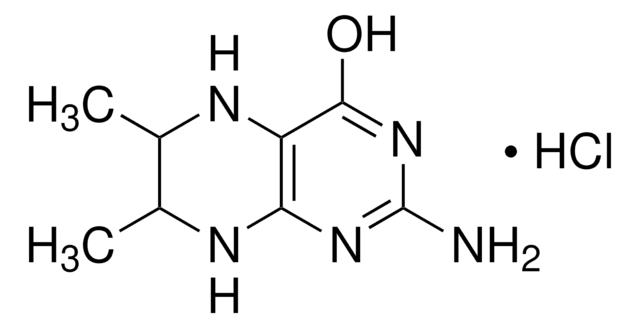D0540
DNQX
≥98% (TLC)
Synonyme(s) :
6,7-Dinitroquinoxaline-2,3(1H,4H)-dione
About This Item
Produits recommandés
Niveau de qualité
Pureté
≥98% (TLC)
Forme
powder
Chaîne SMILES
[O-][N+](=O)c1cc2NC(=O)C(=O)Nc2cc1[N+]([O-])=O
InChI
1S/C8H4N4O6/c13-7-8(14)10-4-2-6(12(17)18)5(11(15)16)1-3(4)9-7/h1-2H,(H,9,13)(H,10,14)
Clé InChI
RWVIMCIPOAXUDG-UHFFFAOYSA-N
Informations sur le gène
human ... GRIA1(2890) , GRIA2(2891) , GRIK1(2897) , GRIK2(2898) , GRIK3(2899) , GRIK4(2900) , GRIK5(2901)
mouse ... Gria1(14799)
rat ... Gria1(50592) , Grik1(29559) , Grik4(24406) , Grin2a(24409)
Application
Actions biochimiques/physiologiques
Caractéristiques et avantages
Certificats d'analyse (COA)
Recherchez un Certificats d'analyse (COA) en saisissant le numéro de lot du produit. Les numéros de lot figurent sur l'étiquette du produit après les mots "Lot" ou "Batch".
Déjà en possession de ce produit ?
Retrouvez la documentation relative aux produits que vous avez récemment achetés dans la Bibliothèque de documents.
Les clients ont également consulté
Articles
DISCOVER Bioactive Small Molecules for Neuroscience
Notre équipe de scientifiques dispose d'une expérience dans tous les secteurs de la recherche, notamment en sciences de la vie, science des matériaux, synthèse chimique, chromatographie, analyse et dans de nombreux autres domaines..
Contacter notre Service technique














